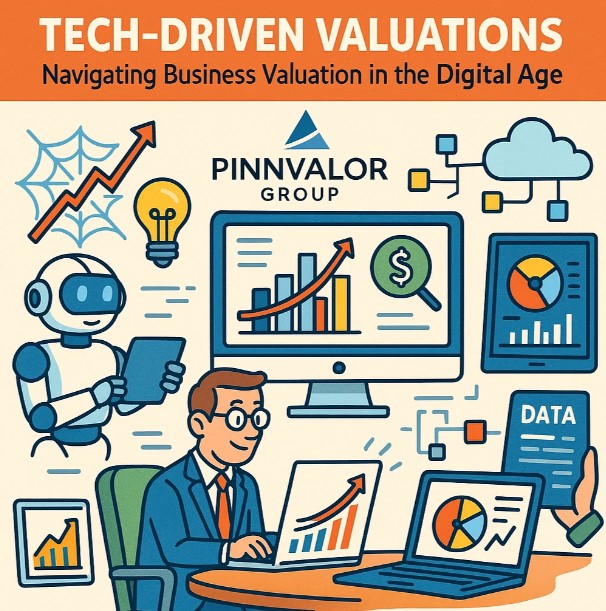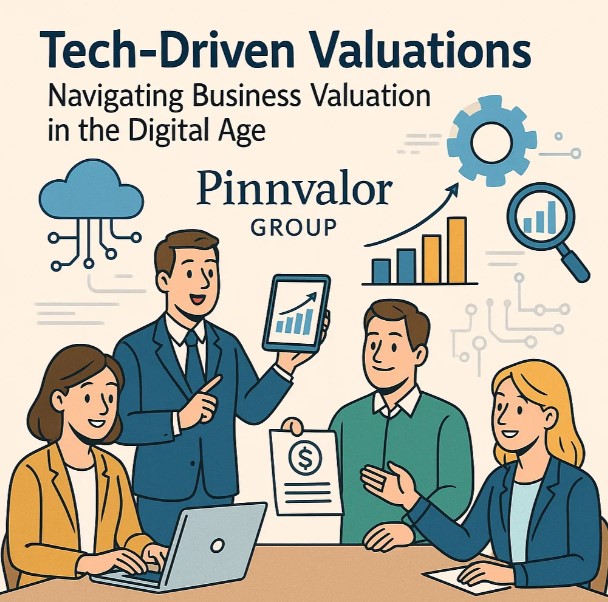
Tech-Driven Valuations: Navigating Business Valuation in the Digital Age
In a rapidly evolving digital economy, traditional business valuation methods are facing a paradigm shift. From startups with intangible assets to tech giants leveraging artificial intelligence and big data, the nature of business value has fundamentally changed. The digital age has introduced new challenges—and opportunities—for how businesses are appraised. This blog explores how technology is reshaping business valuation models and what it means for analysts, investors, and business owners.
Can traditional valuation methods truly capture the worth of today’s tech-driven businesses?
In the digital age, business value isn’t just built on assets you can touch—it's powered by data, algorithms, and user engagement you can’t see.
1. The Traditional Foundations of Business Valuation
Historically, business valuation has relied on three primary approaches:
- Income Approach (e.g., Discounted Cash Flow or DCF)
- Market Approach (e.g., Comparable Company Analysis)
- Asset-Based Approach (e.g., Net Asset Value)
These methods focus heavily on physical assets, historical performance, and predictable cash flows—metrics well-suited for industrial-age businesses but increasingly inadequate for digital enterprises.
2. The Digital Disruption: Why Traditional Models Fall Short
Today’s businesses—particularly in tech, SaaS, and e-commerce—are driven by intangible assets like intellectual property, user data, algorithms, and brand equity. These are harder to quantify but central to value creation.
Challenges with Traditional Models:
- Understated Intangible Value: IP, software, customer networks, and brand loyalty are difficult to price using standard models.
- Volatile Revenue Streams: Subscription models and platform-based revenues defy the predictability assumed by DCF models.
- Rapid Scalability: Tech companies can scale at unprecedented rates, making historical data less predictive.
- Lack of Physical Assets: Asset-based valuations become irrelevant for digital-first companies.
3. The Rise of Tech-Driven Valuation Tools and Techniques
a) Big Data and Advanced Analytics
Valuation firms now incorporate real-time data analytics, scraping market and operational data to build dynamic models. This improves accuracy and enables quicker valuations.
b) Machine Learning & AI in Forecasting
AI can analyze historical financials, industry trends, and macroeconomic indicators to create smarter forecasts. Algorithms adjust for seasonality, consumer behavior, and risk—offering a more nuanced picture of future cash flows.
c) Valuing Intangibles Through Proxy Metrics
Digital metrics such as:
- Customer Acquisition Cost (CAC)
- Lifetime Value (LTV)
- Churn Rate
- Monthly Active Users (MAU)
…are now used as proxies for company value, especially in startups and digital service firms.
d) Blockchain for Verification
Blockchain technology is being explored to verify ownership and authenticity of assets—especially digital assets like NFTs or software patents—strengthening the reliability of asset-based valuations.

4. Sector-Specific Valuation Trends
Tech Startups
For early-stage startups, revenue may be minimal, so valuations rely on:
- Market potential
- Product-market fit
- Team expertise
- Comparable funding rounds
Tech-driven platforms like PitchBook and Crunchbase help investors benchmark valuations using AI-curated datasets.
E-commerce & SaaS
Recurring revenue models are reshaping valuation assumptions. Key valuation drivers now include:
- ARR (Annual Recurring Revenue)
- Customer retention rates
- Platform stickiness and network effects
FinTech and Digital Assets
The rise of cryptocurrencies, NFTs, and DeFi platforms has introduced entirely new asset classes. Valuing these requires understanding tokenomics, transaction volumes, and user activity—all areas where data science plays a key role.
5. Benefits of a Tech-Driven Approach
- Faster Decision-Making: Automation reduces time spent on manual analysis.
- More Realistic Forecasts: Algorithms capture nuances that humans might miss.
- Scalable Valuation: Enables simultaneous analysis of multiple companies or portfolios.
- Higher Transparency: Tech tools offer audit trails and scenario simulations.
6. Caution: Risks and Limitations
Despite its promise, tech-driven valuation isn't foolproof:
- Black Box Problem: Complex AI models may lack transparency.
- Data Quality: “Garbage in, garbage out” still applies.
- Over-Reliance on Tech Metrics: Soft factors like leadership quality or innovation potential can be underweighted.
- Regulatory Gaps: Standards for valuing digital assets and intangibles are still evolving.
7. The Future: Hybrid Valuation Models
The most effective approach may be hybrid—blending traditional finance principles with modern data science. Expect to see:
- Greater reliance on industry-specific KPIs
- Real-time valuation dashboards
- Scenario modeling using AI
- Enhanced regulatory frameworks for tech-driven businesses
Conclusion
Business valuation is no longer just about balance sheets and earnings multiples. In the digital age, understanding a company's technology, data assets, and scalability potential is just as critical. As technology continues to evolve, so too must the methods we use to determine what a business is truly worth.
Whether you're an investor, founder, or financial analyst, embracing tech-driven valuation models is not just an option—it's a necessity for staying relevant and accurate in the modern economy.
